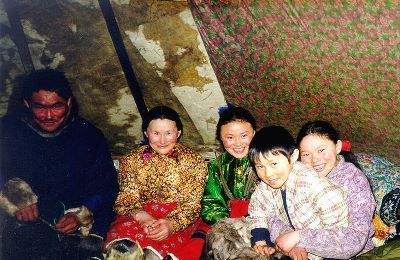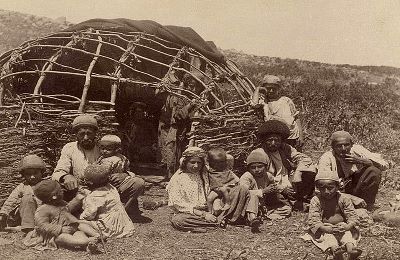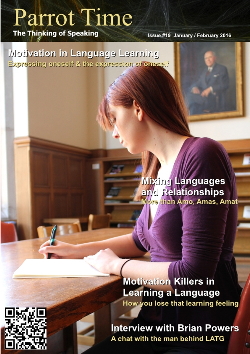
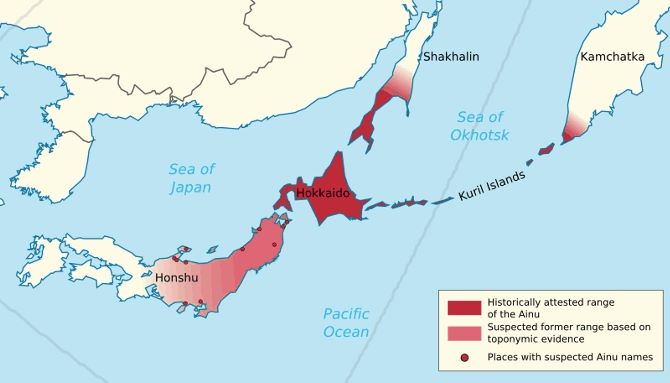 Map showing the historical expanse of the Ainu people Japanese is usually considered to be a language "independent", meaning it has no clear relationship with any other language. Despite that, it is well known and studied, with over 125 million native speakers. It is also a perfect example of the consequences of when two languages "meet" and one conquers the other. In this case, the expanding Japanese empire met with the Ainu people, and one completely subsumed the other. What we now consider Japan was once broken up into smaller regions and islands which were inhabited by various people. The northern most of these islands, Hokkaido, was home to several cultures which rose to prominence then declined to be replaced by another. Between 300 BCE and 1400 CE, some of these were the Yayoi, Muromachi, Zoku-Jomon, Satsumon, Okhotsk, and Ainu. Theoretically, the Ainu people and culture were a mix of the two preceding one, primarily the Satsumon with influences from the Okhotsk. Meanwhile, a southern people, the ancestors of our modern Japanese people, had been growing in power and expanding over the available land, steadily moving north over the centuries. They finally reached Hokkaido in the mid-1400s. They took over the southern part, gaining control over the Esashi and Matsumae people. Three Wars 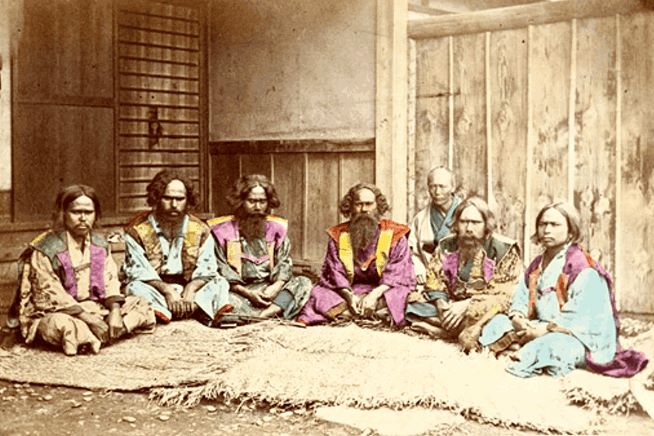 A group of Ainu men sitting of furs in a traditional house The Ainu people were not to be conquered easily, however. The two sides fought for over three centuries, with the three major wars. The first, the Battle of Kosyamain in 1457, was begun over a dispute over a sword, leading to the Ainu leader, Koshamain to lead an attack against the forts of the Wajin, who were the dominant native ethnic group of Japan at the time. They were eventually defeated by samurai Takeda Nobuhiro, who became one of the more famous heroes in the Japanese history of Hokkaido. In 1669, the Battle of Syaksyain began. The Ainu chieftain Shakushain was working to bring the various Ainu clans together against the Matsumae clan, who were the representatives of the Japanese trading interests in the area. The Matsumae defeated them, however, and even after they came to a peace agreement, the Matsumae assassinated the Ainu generals, including Shakushain, as they celebrated. The last major resistance came about in 1789 when Ainu warriors attacked the Japanese on Kunashir Island and at sea. No single reason for the attack is known, but over 70 Japanese were killed, which led to 37 Ainu, who were accused of conspiracy, to be arrested and executed. After that, the Ainu people fell completely under the control of the Japanese and did not attempt to rise against them again. 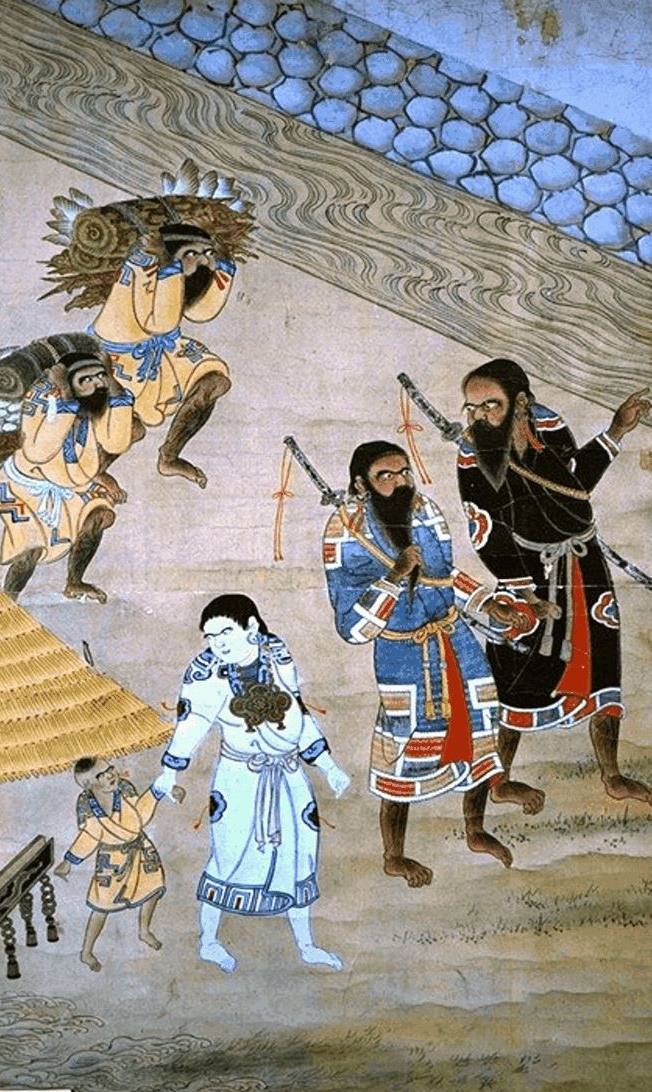 Painting dipicting Ainus on a Matsumae border, passing through customs For the next 80 years, the Ainu were exploited by the Japanese until the Meiji era in 1868. Before then, a government policy of assimilation was in place to take away their identity. The Ainu were forced to use Japanese customs. In 1899, the Hokkaido Aborigine Protection Act was passed. This designated them as "former aborigines", thus formalizing a distinction between the Japanese and the Ainu. They were granted automatic Japanese citizenship, which sounds good, but it really just took away their rights as an indigenous group. Their land was taken by the government. They became viewed as a lesser people, and their language, religion, and customs were oppressed, only to be replaced by those of the Japanese. Rather then become assimilated, they were instead discriminated against, a problem which still exists in modern time. Losing The Language The Ainu language is critically endangered, and has been listed as at risk since the mid 20th century. Most of the ethnic Ainu people, less than 15,000, speak only Japanese. By the 1980s, there were only around 100 speakers of Ainu, with less than twenty who spoke it daily. Today, there are less than a dozen native speakers living in southwestern Hokkaido.  Men fishing in modern day Hokkaido There is perhaps some hope. An active movement is in place to revive the language. The oral literature has been documented, to be used as both as a recorded history and as a teaching tool. The Ainu Association of Hokkaido began teaching Ainu language classes in 1987 and has released materials for learning it. Further action was taken in 1997 when the Ainu Cultural Promotion Act was passed, prompting the creation of dictionaries to further the revitalization. Ainu is written in a modified version of the Japanese katakana syllabary, but there is also a Latin-based alphabet in use, to facilitate learning. The _Ainu Times_ publishes in both. Saving the People 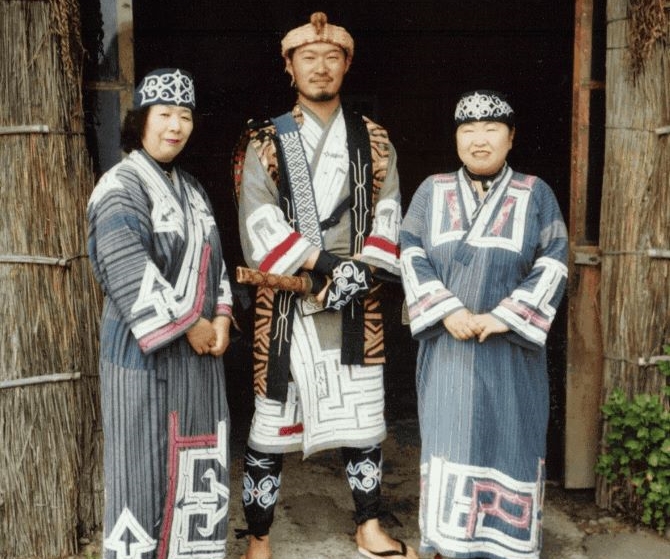 Ainus wearing their traditional clothes in an Ainu Museum In 2008, the Japanese passed a bipartisan, non-binding resolution calling upon the government to recognize the Ainu people as being indigenous to Japan. It urges an end to discrimination against the group, recognising them as "an indigenous people with a distinct language, religion, and culture". But is this another case of "too little, too late"? It is nearly impossible to drag a people, language, and culture back from the edge of extinction, which seems, sadly, to be the only time people decide they need to act. |
| Languages in Peril - Sayonara, Ainu | ||||||||
| Writer: | Erik Zidowecki | |||||||
| Images: | ||||||||
| ||||||||
| Sources: | ||||||||
| ||||||||
All images are Copyright - CC BY-SA (Creative Commons Share Alike) by their respective owners, except for Petey, which is Public Domain (PD) or unless otherwise noted.
|
Looking for learning materials? Find entertaining and educational books for learning a language at Scriveremo Publishing. Just click the link below to find learning books for more than 30 languages!
| |
comments powered by Disqus













